This is the week that the newly remastered, remonkeyed, repackaged and generally rejiggered Beatles box set hits record stores (and my CD player), but of course that’s not really a movie topic—or is it? In one sense, it very obviously isn’t, but in another sense modern film owes a debt to the Beatles just as much as music does. True, their actual movie credits extend to no more than five films—and that’s assuming you include (which I would) Yellow Submarine (1968) where their actual involvement with what’s onscreen is minimal. But what the Beatles—with a lot of help from their friends—brought to the movies extends far beyond those few contributions.
I’ve been writing about the impact of the British Invasion on film for over 20 years in one form or another—often very imperfectly. I realize now, for example, that a four part series I did for Films in Review back in the late 1980s has a central flaw in that I insisted on trying to place it all within the literal decade of the 1960s. That won’t work for the simple reason that the 60s as we think of them in terms of a cultural force don’t really begin until about 1964, and they don’t really end until 1975. It would be convenient for grouping purposes if things began and ended more neatly, but they don’t. Even then, definite beginnings ignore roots and definite endings not only overlook lingering influences, but assume that those influences have stopped.
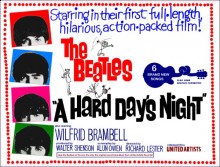
There’s also the drawback that any writing about film tends to focus on its own little area and afford the other factors somewhat short shrift. Those of us who write about the movies tend to think more in terms of the filmmakers. As a result, movies like A Hard Day’s Night (1964) and Help! (1965) are cinematically pigeon-holed as Richard Lester films, which tends to cut into the contribution of the stars of those films. I don’t mean to sell Lester short—without him those films would not be those films, but without the Beatles those films would not exist at all. Even if by some fluke they did exist, it’s unlikely that they would have impacted the face of world film as they did. I’m not saying that efforts from the same era to turn other pop groups into big screen personalities—James Hill’s Every Day’s a Holiday (US title: Seaside Swingers, 1965) and John Boorman’s Catch Us If You Can (US title: Having a Wild Weekend, 1965), for instance—are without merit or influence. But their stars—Freddie and the Dreamers and the Dave Clark Five—barely register as also-rans up against the Beatles.
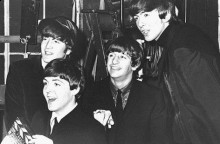
In his liner notes for the most recent DVD incarnation of Help!, Martin Scorsese favorably compares Richard Lester to Jean-Luc Godard and places his films (not just the Beatle ones) in the realm of the most important of their era. I’m not about to argue the point because Scorsese is on the money—and the Godard comparison is an apt one that I suspect is not accidental. One of the major influences on these films comes straight from the art house world—the French New Wave. New Wave film—movies like Godard’s Breathless (1960) and Francois Truffaut’s Shoot the Piano Player (1960)—informs a good deal of British Invasion film. Ken Russell’s French Dressing (1964), which predates A Hard Day’s Night by several months is much influenced by the New Wave. So is Boorman’s Catch Us If You Can.
There are other influences at work. You’ll find traces of 1930s American film (the Marx Brothers are very evident), along with British radio’s The Goon Show. Lester, in fact, had been involved with the Goons—Peter Sellers, Harry Secombe, Spike Milligan—and his short The Running Jumping & Standing Still (1960) featured Sellers and Milligan at their most surrealistic. What Lester did was to blend these disparate elements into his own style—a kind of cinema of the eccentric—and present it to a broader audience than the art house crowd and cineastes who attended revivals of old movies. What made that possible—and to a very real degree—helped fashion this vision was the Beatles. They also have a great deal to do with why these films are still known.
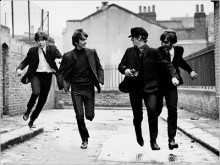
There’s no room in these confines to go into the full extent of the cultural impact of A Hard Day’s Night on the movies. It broke down too many barriers. The greatest of these, however, is that it brought a freedom to the movies that had not been seen for years—and had never been seen in quite this way. Sure, there had long been “youth market” films and we’d been hit with Elvis movies—for better or worse and mostly for worse—for years. American rock ‘n’ roll had been showcased by cheapjack exploitation producers like Sam Katzman, for that matter.
But something new had been added. For once, we had a “youth market” film made with artistry and vision—and one that didn’t feel like it had been slapped together by middle-aged Hollywood producers who not only hadn’t a clue what their target market actually wanted, but were determined to shape what they gave that audience (and by extension, shape the audience) to reflect what they felt the viewer ought to want. They weren’t about to upset the status quo or frighten the horses. Lester and company were.
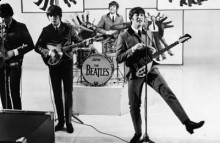
Part of the freshness came from the Beatles themselves—or rather the Beatles as the movie depicted them. They weren’t what you’d call clean-cut (though they were undeniably clean), but neither were they in any way related to the “troubled youth” that flitted and floated through American films of the era. They were, however, cheeky. They questioned their elders. They made fun of them and their hidebound attitudes. They made fun of the way their elders thought they could control and dictate the tastes of the youth market. (See the scene where George is mistaken for a teenager from the casting department and told what he likes and what he will have to like by a TV executive.) The trick was that it was hard to criticize because it was all done in a good-natured way. The cheekiness is never mean and it’s always justified.
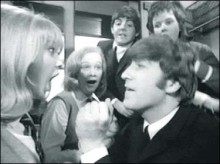
At bottom, the Beatles appeared to be four very presentable young men who were having fun and invited the audience to join in. That they appealed to an anarchic streak in their target audience—legions of kids who’d been dragged to bad Elvis pictures and Doris Day comedies by their parents—was one of the things that set them apart. Suddenly and almost unthinkably, the younger audience were handed a movie that actually seemed to have been made for them. Anyone who expected a suitably mature authority figure to show up and set these lads straight was sadly mistaken. That this anarchic—anti-establishment—tone would develop into something sharper was inevitable, and it didn’t exactly go unnoticed.
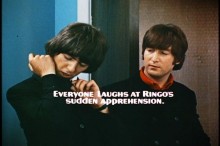
Now, the Beatles are so much a part of our established pop culture heritage (and it’s really immaterial whether or not you like them to realize this), they seem almost safe. If you think that was the case then, either you weren’t there, or you weren’t paying attention. It’s unthinkable (for more than one reason) now, but when I was a kid we were marched in a body into the school auditorium and shown a supposed documentary about the disintegration of culture by these mounting forces that were threatening the status quo. To illustrate just how debased and uncivilized this was, the film played the Beatles’ recording of “Help!”—over footage of (brace yourself) an African tribal dance. If the racism inherent in this peculiar comparison could have been any more obvious, I can’t see how.
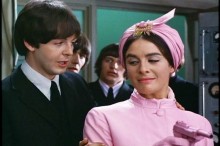
By the time Lester and the Beatles made Help! in 1965, the cheekiness was starting to edge over into satire that suggested there was more afoot than just having fun. Oh, the fun was there—the whole of the film is designed that way—but buried with that fun were questions. Nearly every aspect of the status quo comes under attack. All authority figures are somewhere on the very far side of incompetence—the government, the police, science and any and all experts are all ineffectual boobs. Even religion gets poked at. So do the traditions of filmmaking.
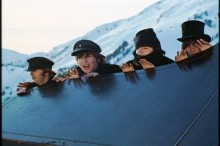
A Hard Day’s Night was full of cinematic playfulness, but it had the built-in excuse of being made to appear to be a documentary. In a sense, it was, if you consider it a fabricated documentary of Beatlemania. Its plot was simple: The Beatles go to the south of England for a TV concert. That’s it. Help!, on the other hand, had a plot—a goofy one about an Indian religious sect out to sacrifice Ringo because their sacred, sacrificial ring has become stuck on his finger, but a plot all the same. The film itself pretends not to notice—or perhaps care—and goes on its way creating what it wants. And what it wants is unstructured fun—to look like it was made up as it went along and shot off the cuff.
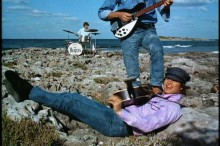
What holds all this firmly in place are the Beatles. They are the voices of reason—and skepticism—for all the screwiness that is going on around them by entrenched members of society. Someone once used the J.B. Priestley notion (espoused in the 1950 film Last Holiday) that the older generation had tried to be mad in a sane world, while the younger generation was trying to be sane in a mad world as a description of what set the Beatles apart from the Marx Brothers. It’s not a bad comparison. What it doesn’t entirely reckon with is how very subversive this line of thought is when applied in the manner of their films. When all is said and done, the message is simple—somebody messed this world up and it wasn’t the kids.
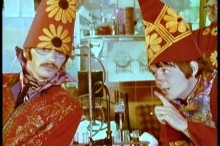
The generally favorable reception given to the two Lester films would fall by the wayside as soon as the Beatles decided (perhaps it was really just Paul who decided) that they could do it all themselves. Armed with little more than an idea, a checkbook and some friends, they would direct their own film, while photography enthusiast Ringo would serve as director of photography. Why not? It was 1967—the echt-60s year—and the air was rife with possibilities. After all, hadn’t they just made the Sgt. Pepper album? What could they not do? Couldn’t they set out on a bus and wouldn’t magical things just happen that could be filmed? And then, the Beatles could “give” the film to world—or at least Great Britain—as a Christmas present on Boxing Day (December 26). It didn’t exactly work out as envisioned. (Envisioned is the word, not planned.)
The result of this idea was the 60 minute TV film Magical Mystery Tour—a film most of us in the States only dreamed about seeing, since its less than enthusiastic reception in the UK hadn’t encouraged any US buyers. But there was the album and its enclosed picture book, and both promised weird and wonderful things. When the Beatles’ little movie finally did show up in limited theatrical engagements (I first saw it in a chewed-up print at a drive-in) in the early 1970s, it lived up to the weird. The wonderful? Well, we’re still fighting over whether it was that. One thing was—and is—certain: It was a mess. But so far as I’m concerned, it was a mess that was worthy of its creators and its era.
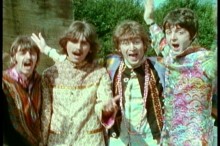
Lacking the discipline that was used to give the illusion of spontaneity to the Lester films—lacking any kind of discipline at all—Magical Mystery Tour lurches across the screen in fits and starts. There’s little discernible plot and the only thing remotely holding it together is a sense of being created entirely on the basis of “wouldn’t it be cool if…” If ever a movie deserved that tired term “self-indulgent,” Magical Mystery Tour qualifies. The strange thing is that a lot of it actually is pretty cool on those terms, in part because it feels like the 1960s—with everything good and bad that implies. In that sense, it’s a very naive work. That naivete is exactly what gives the movie its resonance.
Magical Mystery Tour is simply a wild cornucopia of ideas—some brilliant, some trite, some just downright puzzling—set to a soundtrack that very few people are likely to complain about. It possesses the anarchy that the Lester films suggested—only made real. The satire is still there, though it’s sometimes hard to find within in the vaguely mystical tone of the proceedings. And there’s the stranger than strange sense that the Beatles are desperately trying to say something—without knowing exactly what it is they want to say.
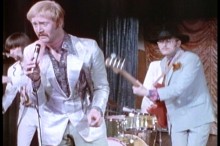
Taken in that sense, it may be the perfect embodiment of its time as a work of extreme hopefulness that contains within itself the very reasons that this sense of hope cannot last. If nothing else, the film’s chilly reception proved that because it proved that the Beatles wanted to go places that their audience didn’t. The intriguing thing about this is that this may have proved true even if they’d stuck with Richard Lester. Much of the same flavor permeates both his How I Won the War (1967) and The Bed-Sitting Room (1969)—neither of which found an enthusiastic audience. The latter—with its classically wrong-headed tag line, “We’ve got a bomb on our hands”—scarcely found any audience at all.
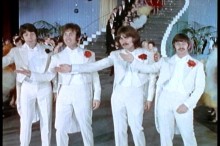
Looked at today, Magical Mystery Tour probably offers more delights than not—even if the delights are undercut for many by the deliberate lack of any real structure. Still, you get choice pieces—“The Fool on the Hill” number (or music video, if you prefer) and the “I Am the Walrus” sequence are fascinating, if a little creepy. There’s a charmingly eccentric race with a cinema organ playing “She Loves You” on the soundtrack and other touches of a similar kind. And there’s a guest appearance by the Bonzo Dog Band performing their “Death Cab for Cutie” at a strip show that has a positively eerie segue to the Beatles’ “Your Mother Should Know.” (And, yes, of course, the fact that Paul’s wearing a black carnation in that last number means “Paul is dead.”)
Unfortunately, Magical Mystery Tour has fallen by the wayside and isn’t readily available. Copies exist—and there’s a Region 0 copy from Australia floating around (I’ve no clue about the quality)—but it currently lacks an official DVD incarnation.
Much the same situation surrounds the animated Yellow Submarine (1968), which is currently out of print—and was in need of an anamorphic reissue in any case. Strictly speaking, the Beatles participation in Yellow Submarine is fairly minimal. They wrote a few new songs for it—“All Together Now,” “Only a Northern Song,” “Hey Bulldog,” “It’s All Too Much”—and appeared in a brief clip at the very end of the film. Otherwise, it’s an interpretation of what the Beatles were “all about” done by others—notably director George Dunning and the writing team of Lee Minoff, Al Brodax, Jack Mendelsohn and Erich Segal (yes, the guy who wrote Love Story). Surprisingly, a good deal of the talent involved came from the frankly awful Saturday morning Beatles cartoons. You’d never know it.
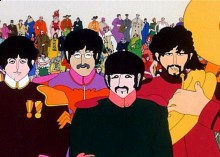
The screenplay is clever and filled with the kind of jokes that only Beatle fans would get—along with a good bit of surprisingly cerebral humor. The direction is assured and the animation and art work are first rate in a decidedly 1960s pop art manner. The result is a charming fantasy that seems to be able to articulate a good bit of the message the Beatles had been working at with Magical Mystery Tour. Perhaps they just needed someone to step back and look at it with a perspective they lacked, but whatever the case it won back a lot of support that Magical Mystery Tour had cost them. OK, so more than a few people harbored suspicions that making the villains of the piece “Blue Meanies” was a slam at the police force, and therefore subversive. And, yes, the vividly colored, fanciful psychedelic imagery smacked of drugs, but it was largely irresistible.
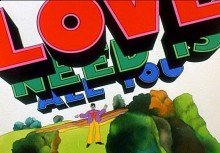
For being a Beatles project once removed, Yellow Submarine managed to capture the myth of the moment perhaps better than any of their other movies. In many ways, it’s the actual incarnation of the whole “All You Need Is Love” concept—making it even more naive than the Beatlemania fabrications of the Lester films and the messiness of Magical Mystery Tour. (The latter can be seen as the message of Yellow Submarine put into action.) About 20 years ago I wrote that we could now see that “All You Need Is Love” wasn’t true and we’d learned that the world couldn’t be saved by a rock song—adding that I wasn’t entirely sure that we were better off for that knowledge. The fact that in the intervening years Baz Luhrmann made Moulin Rouge! (2001) and found an audience ready to embrace the almost identical message it put forth suggests that there’s still a hunger for that slightly silly ideal.
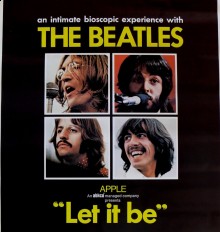
In some ways, it might have been better had the Beatles left it at Yellow Submarine, but they had one more movie to go, Michael Linday-Hogg’s Let It Be (1970)—a pseudo-documentary that happened to dovetail with the break-up of the Beatles, or at least with the public announcement of that break-up. The film cannot be described as good by any reasonable standard—not even by the experimental stretch that can be applied to Magical Mystery Tour. It was—as often was the case—more Paul’s idea than anyone else’s, and the strain shows. In fact, it’s that aspect of Let It Be that keeps it interesting, since it—more or less accidentally—affords the viewer a look into the Beatles as the fragmented four rather than the fab four.
The film is even cited for the scene in which George has an argument with Paul over how to play something—finally telling his bandmate that he can play it the way he wants it, the way Paul wants it, or he can just not play it at all. “Whatever it is that’ll make you happy, I’ll do,” George informs him. The “I don’t care” attitude that had been a joke a few years earlier in George’s big scene in A Hard Day’s Night has become a bitter reality—and one directed not an authority figure, but at his friend and co-worker. The question arises as to whether or not Paul had become that kind of authority figure in George’s mind—if he had become the very thing they once attacked.
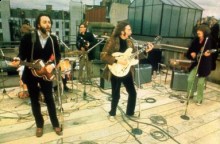
There are other moments in a not dissimilar vein that hint that this is indeed what has happened or is happening. A fairly lengthy scene where Paul explains his idea for the movie they’re making to John is very telling. Paul natters away at what he wants them to do, going on about this not being another Hard Day’s Night or Help! (it certainly isn’t), waxing rhapsodic over what Let It Be will be. John says nothing. He merely smokes and twists his arms around his head like a child who’s being lectured. His face is a perfect mask of boredom. Unfortunately, that boredom is all too often conveyed to the viewer. It’s hard not to think that moments like this have much to do with why Let It Be has never been released on DVD and exists only in old VHS copies and grey market bootlegs. It simply doesn’t make Paul look very good.
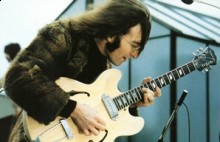
That said, there are enough good moments in the film that it would be nice to see it properly released. There are fleeting bits of genuine beauty—as when John and Yoko waltz to George’s “I Me Mine”—and for anything that the film is otherwise lacking, there is that final public performance by the Beatles on the roof of the Apple building. For that section alone—especially now that Julie Taymor mythologized it anew in Across the Universe (2007)—it would be a film worth having once again, but there’s been no indication that Sir Paul is planning on signing off on a DVD release any time soon.
We’re kind of back to the beginning. The Beatles’ most important contribution to film still lies with the Lester films. That’s going to always be true simply because those are their best movies, but it’s equally true that the films that came after—even when compromised or dubiously conceived—are not only part of the story, but they’re part of a larger picture. Taken as a group of five movies, the Beatles films offer a slice of a time and a mindset that had a greater impact on the movies and pop culture than is casually assumed. So when you give the new-and-improved CDs a listen, take a moment to think about the Beatles on film as well. Me, I need to get back to going through the box set. And though it’s still probably the stupidest song the Beatles ever recorded, even “Mr. Moonlight” sounds pretty good in its new incarnation.




Luap deirub I.
Luap deirub I.
Hey, that clue wasn’t backwards!
There is an “official” release of MAGICAL MYSTERY TOUR. MPI released it wayyyy back at the beginning of the DVD format (I’m looking at my copy right now…the quality leaves something to be desired). I think the DVD came about around the same time as the first MPI DVD of A HARD DAYS NIGHT, somewhere in 1997.
To be fair, I think that your series in FILMS IN REVIEW is one of the best assessments of the era (that is, when I finally was able to assemble the four pieces). You should update it and re-publish it somewhere!
Equally important to The Beatles film legacy, I think (and I may be in the minority here), are the residual films. ALL MY LOVING, ALL THIS AND WORLD WAR II, and even stuff like the brilliant and underrated THE RUTLES flesh out their film legacy.
BTW, Ken, do you have a copy of ALL THIS AND WORLD WAR II that you’d care to have enter circulation?
Hey, that clue wasn’t backwards!
But I did type it with no shoes on.
There is an “official” release of MAGICAL MYSTERY TOUR. MPI released it wayyyy back at the beginning of the DVD format (I’m looking at my copy right now…the quality leaves something to be desired). I think the DVD came about around the same time as the first MPI DVD of A HARD DAYS NIGHT, somewhere in 1997.
Yeah, I have that, too, but it’s long out of print. You can find it used on Amazon in a set with a full-frame Help! and a couple documentaries for about $100. As for the quality, I’m not sure that there is a good copy of the film. I’ve never seen one.
To be fair, I think that your series in FILMS IN REVIEW is one of the best assessments of the era (that is, when I finally was able to assemble the four pieces). You should update it and re-publish it somewhere!
Thank you. If you assembled all four pieces, you’re up on me. If I were to rework it and re-publish it (assuming anyone wanted it), I’d go back and redo it through 1975. Ideally, it should be a book — and it almost was once, until the publisher decided that books with the word “British” in the title didn’t sell.
Equally important to The Beatles film legacy, I think (and I may be in the minority here), are the residual films. ALL MY LOVING, ALL THIS AND WORLD WAR II, and even stuff like the brilliant and underrated THE RUTLES flesh out their film legacy.
Important? Yes. Equally important, maybe. You know, apart from having the Rutles film on laserdisc, I don’t think I have a copy of any of these at the moment.
But I did type it with no shoes on.
Yes, but was there a license plate reading “28IF” in the background?
A review of yours I am looking forward to way in the future, the Zemeckis remake of “Yellow Submarine.”
A review of yours I am looking forward to way in the future, the Zemeckis remake of “Yellow Submarine.”
You know, there’s a mean streak in you.
the Zemeckis remake of “Yellow Submarine.”
The phrase ‘raping my childhood’, oft used to describe things like the Star Wars prequels and back comic book adaptations, seems appropriate here.
At least they didn’t have the temerity to try and remake A HARD DAY’S NIGHT. Having said that, they’ll probably do it with the Jonas Brothers in a couple of years.
The phrase ‘raping my childhood’, oft used to describe things like the Star Wars prequels and back comic book adaptations, seems appropriate here.
While I generally defend remakes on the strength of the fact that they don’t remove the originals and may indeed cause people to see them, I have to agree with you on this. I think a lot of it has to do with the name Zemeckis being attached to it — and the knowledge that instead of the pop art cartoonizations of the Beatles, we’re going to get that creepy-as-hell motion capture “animation” that tends to make everyone look burn victims with bad skin grafts — or like the stars of White Chicks.
On the plus side, last I knew this wasn’t a done deal.
I’m a bit surprised that there is nothing here mentioning Ringo’s ‘star turn’ playing a Mexican gardner in the movie ‘Candy’ (the DVD of which is out-of-print and going for $70 bucks and up on the aftermarket).
I’m a bit surprised that there is nothing here mentioning Ringo’s ‘star turn’ playing a Mexican gardner in the movie ‘Candy’ (the DVD of which is out-of-print and going for $70 bucks and up on the aftermarket).
Well, I didn’t mention The Magic Christian, Lisztomania or Caveman either — the first two of which I prefer to Candy, though Candy is a fascinating mess.
Oof. Candy. The queerest movie I’ve ever seen. The slightly more triumphant flipside of Otto Preminger’s Skidoo, as it were. Yet it was also a relic from that ill-starred attempted Hollywood co-opt of the acid generation. Let us not forget that Candy was a timely companion piece to another Terry Southern adaptation film that has weathered the test of time much better – The Magic Christian. A film that also has a Ringo Starr thespic turn in a manner that takes us back to our starting topic.
CANDY can be had fairly cheaply if you import the Region 2 DVD. I just recently got a copy of CAVEMAN and I have to say that I “look forward” to watching it!
I just recently got a copy of CAVEMAN and I have to say that I “look forward” to watching it!
What’s next? The entire set of episodes of Shining Time Station?
Actually, I have Candy. I bought it off Carlos after he ran it at World Cinema. I can’t think why exactly, since I don’t really envision watching it again and that damned birth control pill dispenser shaped tin container makes it a pain to store.
CANDY can be had fairly cheaply if you import the Region 2 DVD. I just recently got a copy of CAVEMAN and I have to say that I “look forward” to watching it!
The out of print version of CANDY stateside is running about $70.
OR you can rent it from us! It is a fine mess. I wish they would put out SKIDOO!!!
I wish they would put out SKIDOO!!!
I saw Skidoo. Now, granted it was a pan and scan copy, but I can’t say that I want to see it again to see if letterboxing helps.
I saw Skidoo. Now, granted it was a pan and scan copy, but I can’t say that I want to see it again to see if letterboxing helps.
I’m sure Jackie Gleason’s acid trip would look fantastic letterboxed.
I’m sure Jackie Gleason’s acid trip would look fantastic letterboxed
What in the hell do you suppose Preminger was thinking? (Then again that’s a question I pose during most of his films.)
Down and out the other day, so I decided to have a little Beatles marathon to cheer me up and make me feel better as I rested in bed.
Started out with “Yellow Submarine.” It’s my favorite animated film, there is always something to look at, and always something new to see every time you watch it. I love the “Lucy in the Sky with Diamonds” sequence, just how messy and beautiful it is. Just how the movie has so many different styles of animation and techniques that captures the songs and style of The Beatles, is perfect. My only complaint about the movie, and I’m not sure if it’s my DVD, but I wish the volume of the voices were just a little bit higher.
Other thoughts on “Yellow Submarine” were on the up and coming remake. With the biggest question being “How are they going to do it?” And if it is to be done in Zemeckis’s 3-D style… for some reason picturing the The Fab Four like that makes my stomach turn. It’s disgusting.
Next, I took a detour, and watched some of the extras on the “A Hard Day’s Night” DVD. Good stuff. Then I watched “Help!”
“Help!” captures ‘silly’ in the best possible way. If you’re having a bad day, just watch “Help!” It’s like you can’t help but feel playful and happy when and after you watch it. That fun energy is infectious. And I love how they put a tiger to sleep by singing “Ode to Joy.”
I don’t know what it was about that viewing of “Help!”, but it made me want to see the other non Beatles movies of his. I’m really jealous of the director, his ‘Beatles’ movies have a free and strong spirit about them. Is that captured in any other works of his, or if it’s only because of the charisma of The Beatles that these movies feel they way they do. I want that spirit in my movies.
Before passing out to “Rubber Soul” (hey, I needed a taste to know just how good those remastered CDs sound, since I can’t afford the set at the moment) I finished my movie marathon with, well you know.
“A Hard Day’s Night” has even more of that infectious ‘free’ spirit, mostly because as you mentioned, it really doesn’t have a plot. Instead, you have the lucky chance to just hang out in a day in the life (groan if you must) of The Beatles. What stands out the most for me is how beautifully shot the movie is. It captures a time I will never get to experience in my own life, and yet this wonderful movie gives you that experience that grows richer and richer every time you see it. I smile just thinking about every scene as I type this.
Just felt like sharing some of my thoughts here with fellow fans. I haven’t seen “Magical Mystery Tour” or “Let it Be” (yet I did find out they are on you tube with a little research) but I’m sure that they have that certain magical quality, even if they are somewhat lesser of the three I’ve mentioned here. I don’t know what to say that already hasn’t been said about this band, so I’ll leave on a quote that someone said at a gaming convention that I attended to this year : “I know it sounds really cliché, but there is a reason why. The Beatles are my favorite band. If you think there was a band greater than The Beatles, I’m sorry, they’re not. Sorry. They’re just not.”
My only complaint about the movie, and I’m not sure if it’s my DVD, but I wish the volume of the voices were just a little bit higher.
I’ve never noticed that, but I object to the fact that it’s not anamorphically enhance — and that it’s OOP.
Other thoughts on “Yellow Submarine” were on the up and coming remake. With the biggest question being “How are they going to do it?” And if it is to be done in Zemeckis’s 3-D style… for some reason picturing the The Fab Four like that makes my stomach turn. It’s disgusting.
Zemeckis tends to turn my stomach period. I don’t know how it will be done, but I’m suspect it will be done exactly in the process you’re afraid of.
I don’t know what it was about that viewing of “Help!”, but it made me want to see the other non Beatles movies of his. I’m really jealous of the director, his ‘Beatles’ movies have a free and strong spirit about them. Is that captured in any other works of his, or if it’s only because of the charisma of The Beatles that these movies feel they way they do.
With the possible exception of Mouse on the Moon, all of Lester’s films from 1962 through 1969 have something of that feeling. The Knack and How to Get It — fits between the two Beatle films — is the most like them, and your description of what Hard Day’s Night allows you to experience is a good description of The Knack — minus the celebrity factor. The same attitude — constrained a bit by the requirements of the script — pervades A Funny Thing Happened on the Way to the Forum. How I Won the War is similar in style, but more bitter in tone, as are Petulia and The Bed-Sitting Room. His Three and Four Musketeers movies from the 70s are in the same vein, as is Royal Flash from 1975. Nothing past that is the same.
I haven’t seen “Magical Mystery Tour” or “Let it Be” (yet I did find out they are on you tube with a little research) but I’m sure that they have that certain magical quality, even if they are somewhat lesser
I’m sorry, but watching a movie on You Tube is not watching a movie.
“I know it sounds really cliché, but there is a reason why. The Beatles are my favorite band. If you think there was a band greater than The Beatles, I’m sorry, they’re not. Sorry. They’re just not.”
Even while I detest the use of “cliche” in that manner (it doesn’t “sound cliche,” it “sounds cliched”), I’m not really going to argue with that assessment. Others will.